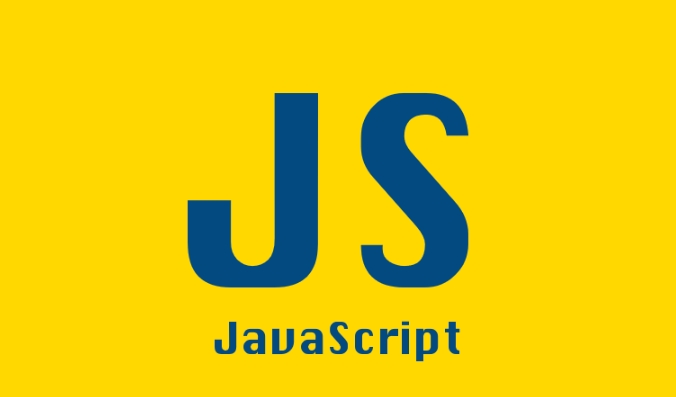了解JavaScript的執行上下文和提升
執行上下文是JavaScript運行代碼的環境,分為全局和函數兩種,每種都經歷創建和執行兩個階段;2. 提升是JS在創建階段將聲明(非初始化)移到作用域頂部的行為,函數聲明完全提升,var變量聲明提升但值為undefined,let/const提升但處於暫時性死區不可訪問;3. 理解這兩個概念能幫你精準調試undefined或ReferenceError問題、避免var帶來的隱式提升陷阱、並明白let/const更安全的原因。

When you start digging into how JavaScript actually runs your code — especially the weird parts like why you can call a function before declaring it — you hit two key concepts: Execution Context and Hoisting . These aren't just interview buzzwords; they explain real behavior that trips up even intermediate developers.

Let's break them down in plain terms.
✅ What Is an Execution Context?
Think of an execution context as the environment where your JavaScript code runs. Every time a function is called (or your script starts), JS creates a new execution context for it. There are two main types:

- Global Execution Context : Created when your script first runs. Everything not inside a function lives here.
- Function Execution Context : Created each time a function is called.
Each context has two phases:
- Creation Phase : JS sets up memory space for variables and functions (this is where hoisting happens).
- Execution Phase : JS runs your code line by line.
This two-phase setup is crucial — it's why some things seem to work “before” they should.

? What Is Hoisting?
Hoisting is JavaScript's behavior of moving declarations (not initializations) to the top of their scope during the creation phase.
But here's the catch:
- Function declarations are fully hoisted — you can call them before they appear in code.
- Variable declarations (
var,let,const) are only partially hoisted — their declaration is moved, but not their assignment.
Examples That Show the Difference:
console.log(myVar); // undefined (not ReferenceError!)
var myVar = 5;
console.log(myFunc()); // "Hello!" — works!
function myFunc() {
return "Hello!";
}
console.log(myLet); // ReferenceError!
let myLet = 10;Why the difference?
-
var myVargets hoisted asvar myVar = undefined;— so it exists but isundefined. -
function myFunc()is fully hoisted — the whole function is available. -
let myLetis hoisted but stays in the Temporal Dead Zone (TDZ) until the line where it's declared. Accessing it before that throws an error.
? Why This Matters in Real Code
You might not write code that calls things before declaring them (and you shouldn't!), but understanding this helps you:
- Debug weird
undefinedorReferenceErrorissues. - Avoid bugs when refactoring or working with legacy code using
var. - Understand why
let/constare safer — they don't silently default toundefined.
For example, this kind of pattern is common in older code:
if (condition) {
var x = 1;
} else {
var x = 2;
}
console.log(x); // Works — but x is function-scoped, not block-scoped With let , you'd get clearer scoping — and avoid accidental hoisting surprises.
? Pro Tip: How to Avoid Hoisting Gotchas
- Use
letandconstinstead ofvar— they're block-scoped and don't hoist in a confusing way. - Always declare variables at the top of their scope (especially in functions) — it makes hoisting behavior predictable.
- Declare functions before calling them — even though JS allows it, it hurts readability.
Basically, hoisting isn't magic — it's just how JS sets up memory during the creation phase. Once you see execution context as a two-step process (setup then run), hoisting makes perfect sense.
It's not about when you write code — it's about when JS reads it.
以上是了解JavaScript的執行上下文和提升的詳細內容。更多資訊請關注PHP中文網其他相關文章!

熱AI工具

Undress AI Tool
免費脫衣圖片

Undresser.AI Undress
人工智慧驅動的應用程序,用於創建逼真的裸體照片

AI Clothes Remover
用於從照片中去除衣服的線上人工智慧工具。

Clothoff.io
AI脫衣器

Video Face Swap
使用我們完全免費的人工智慧換臉工具,輕鬆在任何影片中換臉!

熱門文章

熱工具

記事本++7.3.1
好用且免費的程式碼編輯器

SublimeText3漢化版
中文版,非常好用

禪工作室 13.0.1
強大的PHP整合開發環境

Dreamweaver CS6
視覺化網頁開發工具

SublimeText3 Mac版
神級程式碼編輯軟體(SublimeText3)
 如何在node.js中提出HTTP請求?
Jul 13, 2025 am 02:18 AM
如何在node.js中提出HTTP請求?
Jul 13, 2025 am 02:18 AM
在Node.js中發起HTTP請求有三種常用方式:使用內置模塊、axios和node-fetch。 1.使用內置的http/https模塊無需依賴,適合基礎場景,但需手動處理數據拼接和錯誤監聽,例如用https.get()獲取數據或通過.write()發送POST請求;2.axios是基於Promise的第三方庫,語法簡潔且功能強大,支持async/await、自動JSON轉換、攔截器等,推薦用於簡化異步請求操作;3.node-fetch提供類似瀏覽器fetch的風格,基於Promise且語法簡單
 JavaScript數據類型:原始與參考
Jul 13, 2025 am 02:43 AM
JavaScript數據類型:原始與參考
Jul 13, 2025 am 02:43 AM
JavaScript的數據類型分為原始類型和引用類型。原始類型包括string、number、boolean、null、undefined和symbol,其值不可變且賦值時復制副本,因此互不影響;引用類型如對象、數組和函數存儲的是內存地址,指向同一對象的變量會相互影響。判斷類型可用typeof和instanceof,但需注意typeofnull的歷史問題。理解這兩類差異有助於編寫更穩定可靠的代碼。
 過濾JavaScript中的一系列對象
Jul 12, 2025 am 03:14 AM
過濾JavaScript中的一系列對象
Jul 12, 2025 am 03:14 AM
JavaScript中filter()方法用於創建一個包含所有通過測試元素的新數組。 1.filter()不修改原數組,而是返回符合條件元素的新數組;2.基本語法為array.filter((element)=>{returncondition;});3.可按屬性值過濾對像數組,如篩選年齡大於30的用戶;4.支持多條件篩選,例如同時滿足年齡和名字長度條件;5.可處理動態條件,將篩選參數傳入函數以實現靈活過濾;6.使用時注意必須返回布爾值,避免返回空數組,以及結合其他方法實現字符串匹配等複雜邏
 如何檢查數組是否在JavaScript中包含一個值
Jul 13, 2025 am 02:16 AM
如何檢查數組是否在JavaScript中包含一個值
Jul 13, 2025 am 02:16 AM
在JavaScript中檢查數組是否包含某個值,最常用方法是includes(),它返回布爾值,語法為array.includes(valueToFind),例如fruits.includes('banana')返回true;若需兼容舊環境,則使用indexOf(),如numbers.indexOf(20)!==-1返回true;對於對像或複雜數據,應使用some()方法進行深度比較,如users.some(user=>user.id===1)返回true。
 在異步/等待JavaScript函數中處理錯誤
Jul 12, 2025 am 03:17 AM
在異步/等待JavaScript函數中處理錯誤
Jul 12, 2025 am 03:17 AM
處理異步函數中的錯誤應使用try/catch、在調用鏈中處理、使用.catch()方法、並監聽unhandledrejection事件。 1.使用try/catch捕獲錯誤是推薦方式,結構清晰且能處理await中的異常;2.在調用鏈中處理錯誤可集中邏輯,適合多步驟流程;3.使用.catch()可在調用async函數後捕獲錯誤,適用於Promise組合場景;4.監聽unhandledrejection事件可記錄未處理的rejection,作為最後一道防線;以上方法共同確保異步錯誤被正確捕獲和處理。
 如何處理JavaScript中的時區?
Jul 11, 2025 am 02:41 AM
如何處理JavaScript中的時區?
Jul 11, 2025 am 02:41 AM
處理JavaScript時區問題的關鍵在於選擇合適的方法。 1.使用原生Date對象時,推薦以UTC時間進行存儲和傳輸,並在展示時轉換為用戶本地時區;2.對於復雜時區操作,可使用moment-timezone,它支持IANA時區數據庫並提供便捷的格式化與轉換功能;3.若需本地化顯示時間且不想引入第三方庫,可使用Intl.DateTimeFormat;4.推薦現代輕量方案day.js配合timezone和utc插件,其API簡潔、性能良好並支持時區轉換。
 JavaScript上下文中解釋的虛擬DOM的概念
Jul 12, 2025 am 03:09 AM
JavaScript上下文中解釋的虛擬DOM的概念
Jul 12, 2025 am 03:09 AM
虛擬DOM是一種優化真實DOM更新的編程概念,通過在內存中創建與真實DOM對應的樹形結構,避免頻繁直接操作真實DOM。其核心原理是:1.數據變化時生成新的虛擬DOM;2.對比新舊虛擬DOM找出最小差異;3.批量更新真實DOM以減少重排重繪開銷。此外,使用唯一穩定key可提升列表對比效率,而部分現代框架已採用其他技術替代虛擬DOM。
 什麼是功能編程?核心概念的JS綜述
Jul 11, 2025 am 03:13 AM
什麼是功能編程?核心概念的JS綜述
Jul 11, 2025 am 03:13 AM
功能程序injavascriptemplosize cleansclean,precedableCodEthroughCoreConcepts.1.purefunctionsConsisterlyTurnTheSameOutTunthesMeTputputputputputputputputsefts.2.mmutability and prodicatient.2.mmutabilityabilitietyavoidsdatamodificationbybydatamodificationbybydatamodificationbybydatamodificationbybycreatingnewdatacopies,red red







